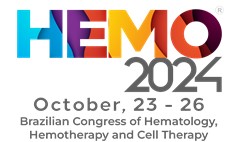
The greatest improvements in the management of Acute Lymphoblastic Leukemia (ALL) have been witnessed in Ph+ALL patients. The advancements have stemmed from an always more precise genetic characterization at presentation, the use of tailored treatment, the precise monitoring of minima/Measurable Residual Disease (MRD) and, finally, by the inclusion of immunotherapy in the frontline treatment. Prior to the advent of Tyrosine Kinase Inhibitors (TKIs), Ph+ALL was the hematologic malignancy with the worse outcome. The frontline use of TKIs has changed the natural history of the disease. Since year 2000 in Italy all patients enrolled in the GIMEMA multicenter protocols have been treated in induction with a TKI alone (plus steroids) and no systemic chemotherapy. The subsequent advancement has been brought by the addition of the bispecific monoclonal antibody blinatumomab as consolidation, always in the absence of systemic chemotherapy. The results of the GIMEMA LAL2116 (D-ALBA) trial for patients of all ages showed high rates of molecular response following an induction/consolidation treatment with dasatinib and blinatumomab. At 53-months, survival rates of 75%‒80% were recorded, with 50% of patients being managed only with a TKI and blinatumomab, without chemotherapy and transplant. Most MRD+ patients were allografted. IKZF-plus patients have a less favorable outcome and should be identified at diagnosis. When possible, they should undergo an allogeneic transplant. In the subsequent phase 3 GIMEMA ALL2820 trial, patients enrolled in the experimental arm and treated with ponatinib followed by blinatumomab showed even higher rates of molecular response, with estimated OS and DFS of 94.9% and 95.6% at 12-months. Of interest, the combination of dasatinib and ponatinib plus blinatumomab, in the absence of systemic chemotherapy, is associated with a marked host immune activation. The MDACC group also reported the effectiveness of ponatinib combined with blinatumomab, though the combination was associated with greater toxicity. For a review on the treatment of adult Ph+ALL see Chiaretti & Foà. The GIMEMA ALL2820 trial will conclusively show how many patients can be spared systemic chemotherapy and transplant. At the interim analysis, only 10% of patients enrolled in the ponatinib + blinatumomab arm have so far undergone a transplant. I have been asked to cover ‘How I Treat Ph+ALL’, which more appropriately should be ‘How Should I Treat Ph+ LL’ Based on the 25-year experience gathered through the GIMEMA trials, the optimal algorithm should be: i) Identify the presence of the BCR/ABL gene lesion within one week from diagnosis; ii) During this time treat patients with steroids; iii) Start induction with dasatinib or ponatinib plus steroids, with no systemic chemotherapy; iv) CNS prophylaxis should be carried out; v) MRD should be monitored molecularly at given timepoints; vi) After induction, all patients should be consolidated with multiple cycles of blinatumomab (up to 5 in our protocols); vii) TKI should not be stopped. Through this approach the large majority of patients – of all ages – will become molecularly negative. IKZF-plus patients should be identified on the diagnostic material. Transplant should be offered to patients with an unfavorable genetic profile and/or evidence of MRD. All patients should be closely monitored for MRD during the follow-up. The possibility of offering such a personalized frontline management to all patients – including the elderly – strongly relies on adequate and standardized laboratory facilities aimed at a broad diagnostic work-up and at an accurate monitoring of MRD, as well as an optimal and timely access to the different drugs. In the real life, this is often not possible. Patients should then undergo a TKI (plus steroid) induction associated with mild chemotherapy. Many such patients are offered an allogeneic transplant. The future of patients with Ph+ALL of all ages is looking always more favorable if all the pieces of the puzzle are in place. It is likely that with the advent of the subcutaneous formulation of blinatumomab the long-term outcome will look even better.






